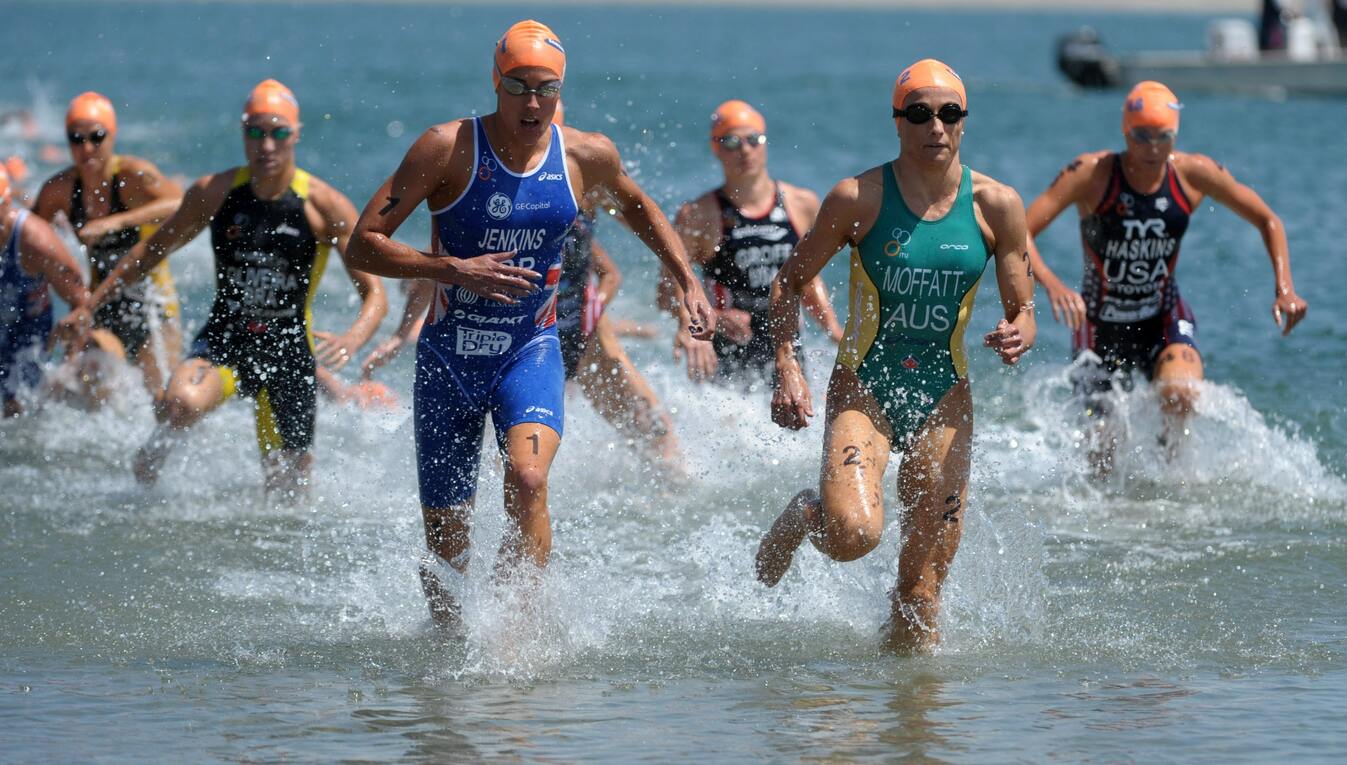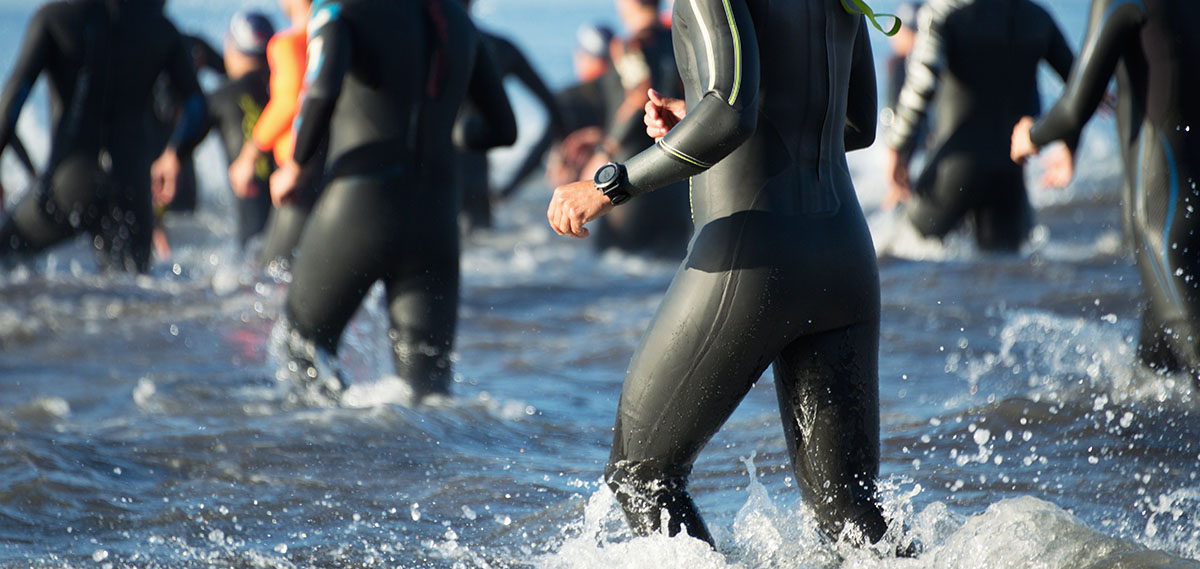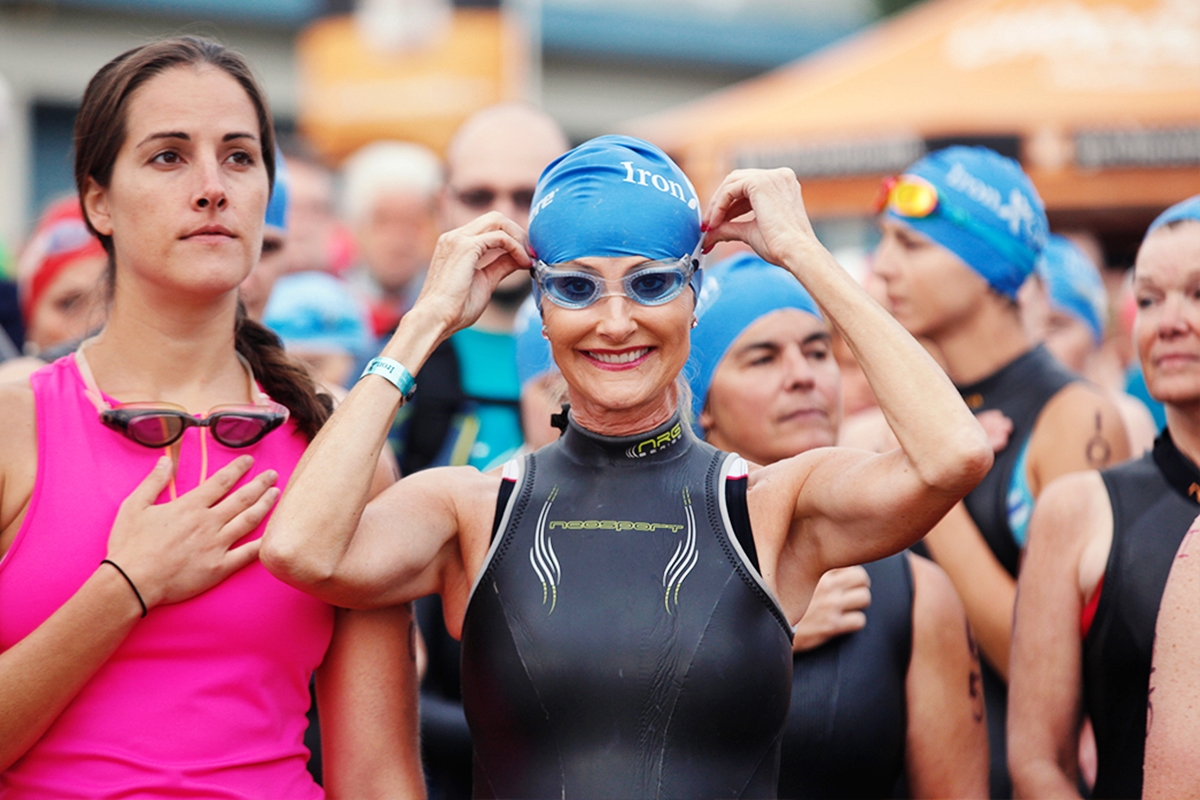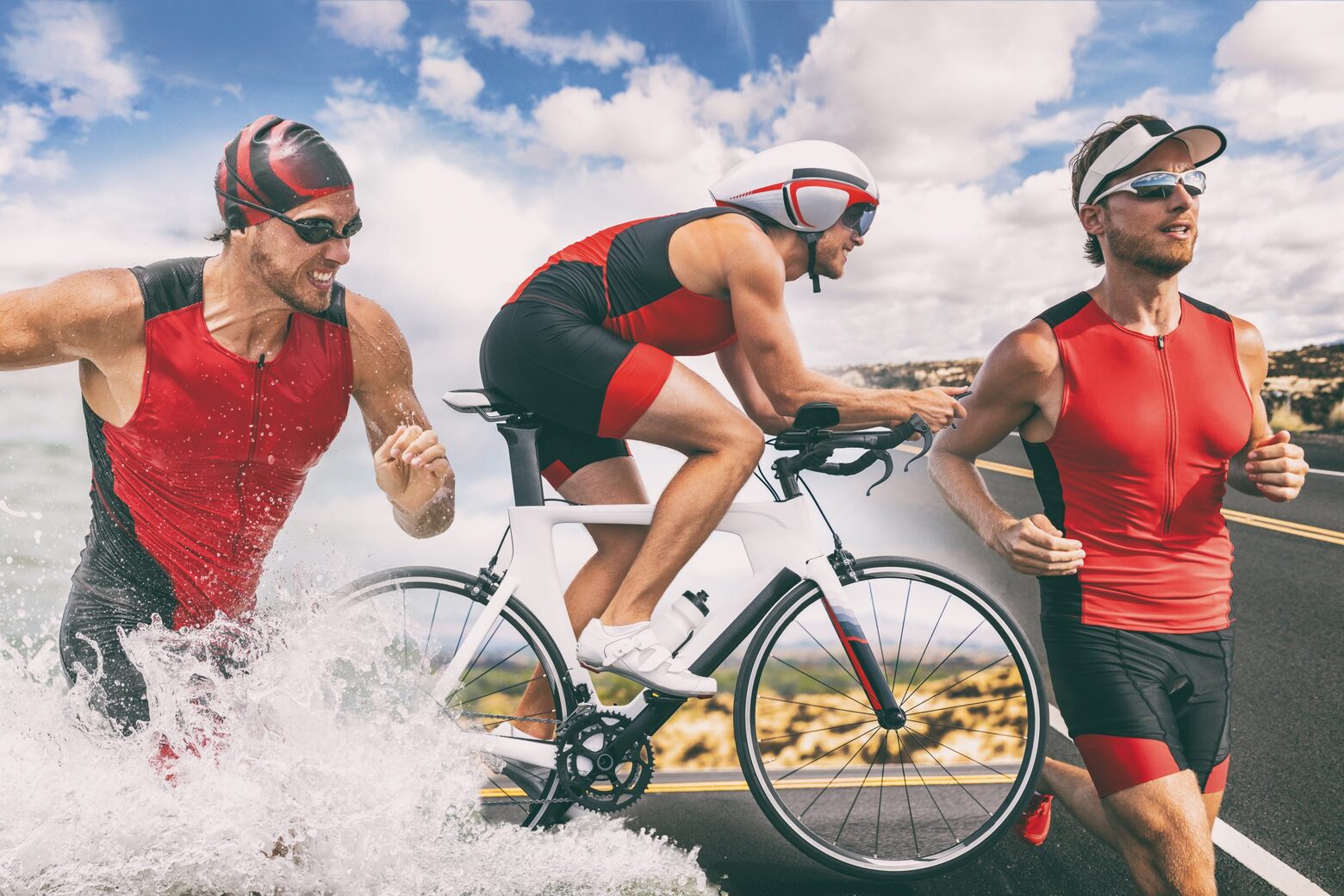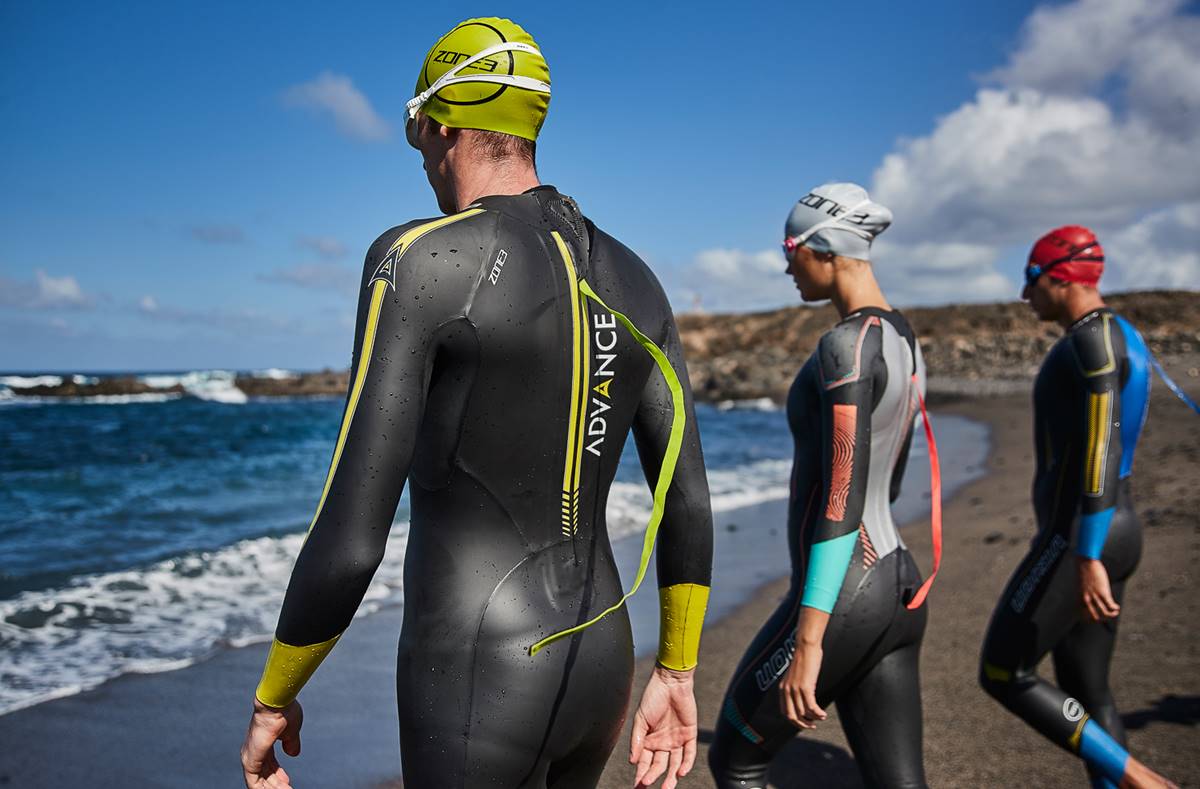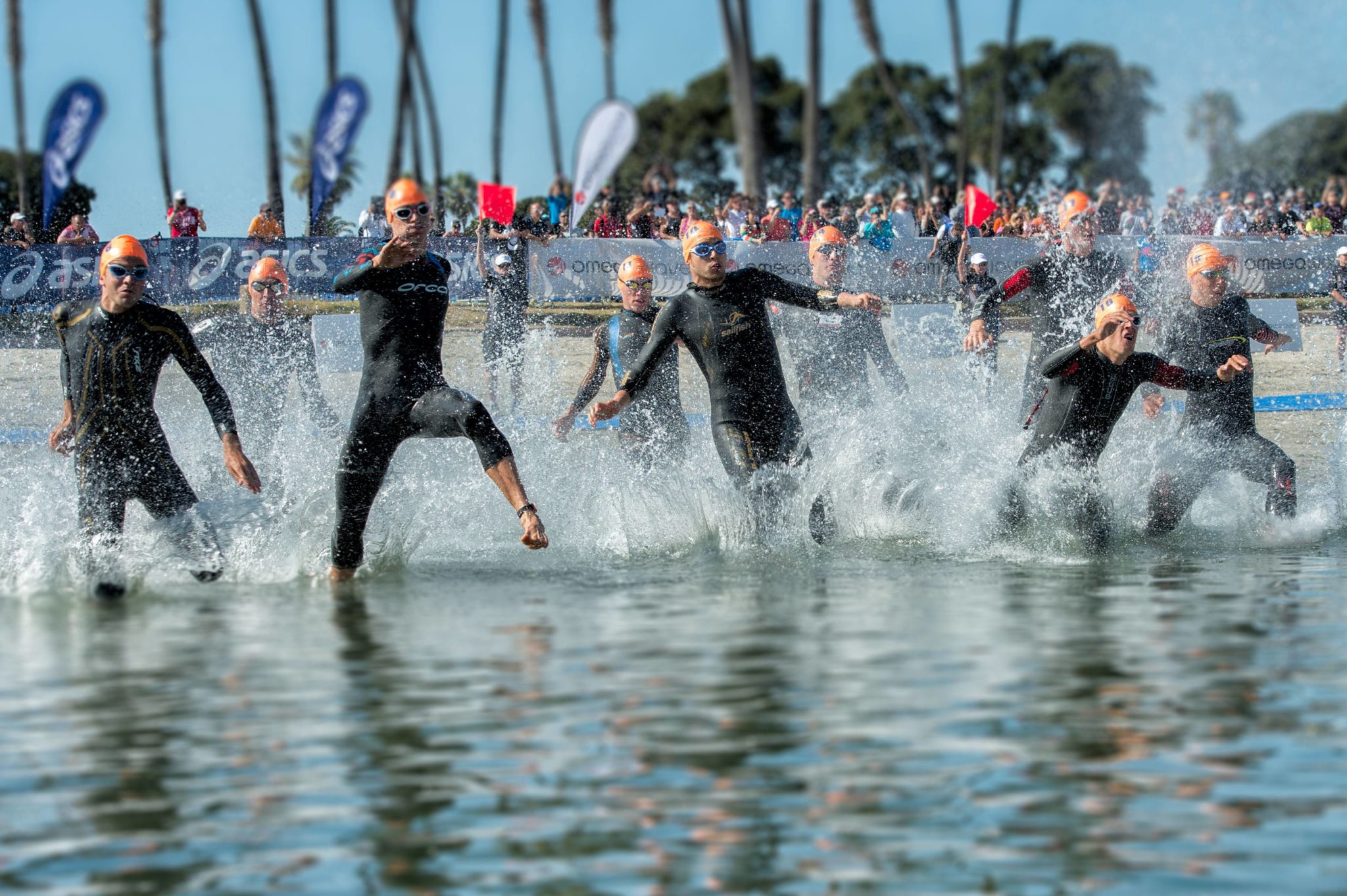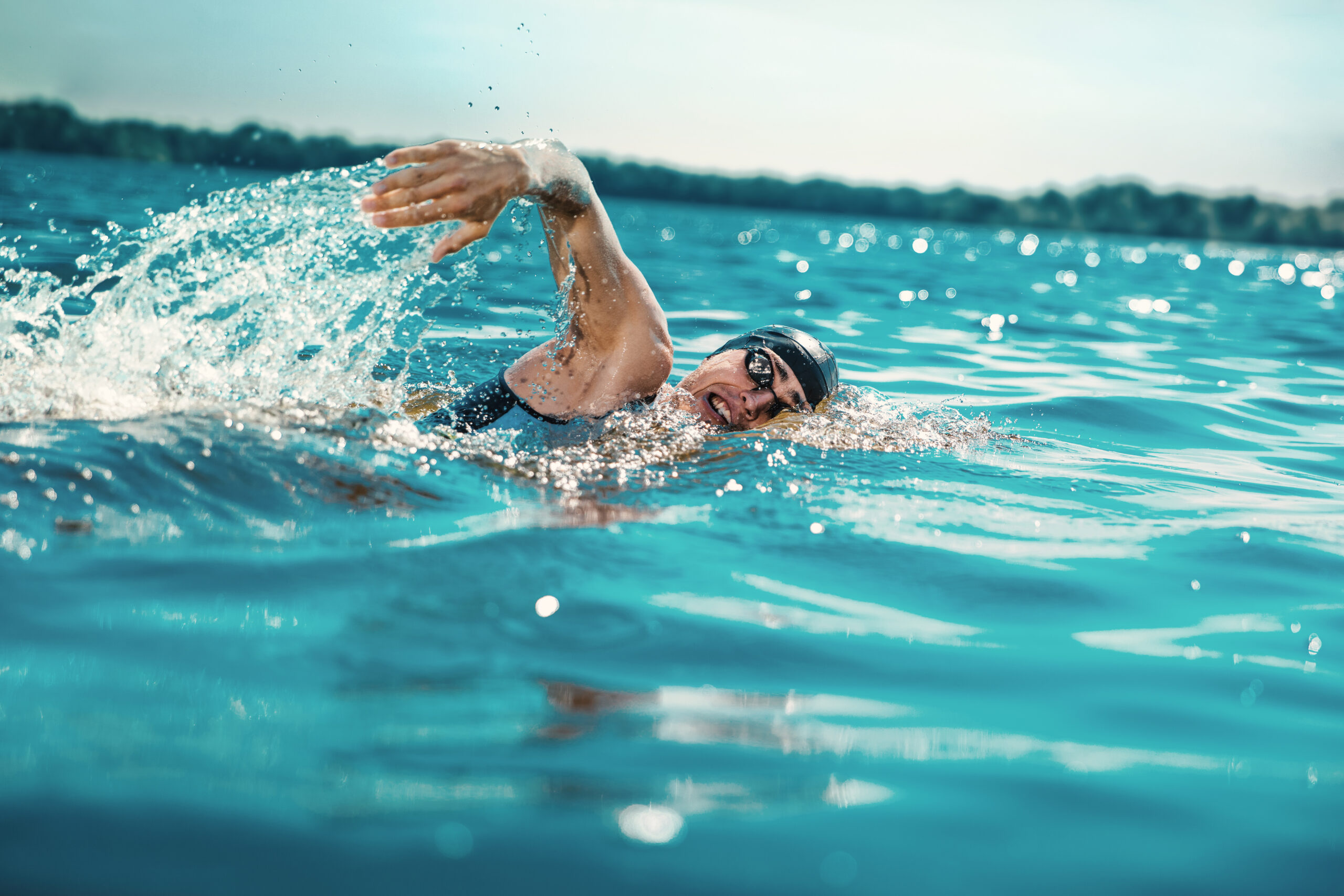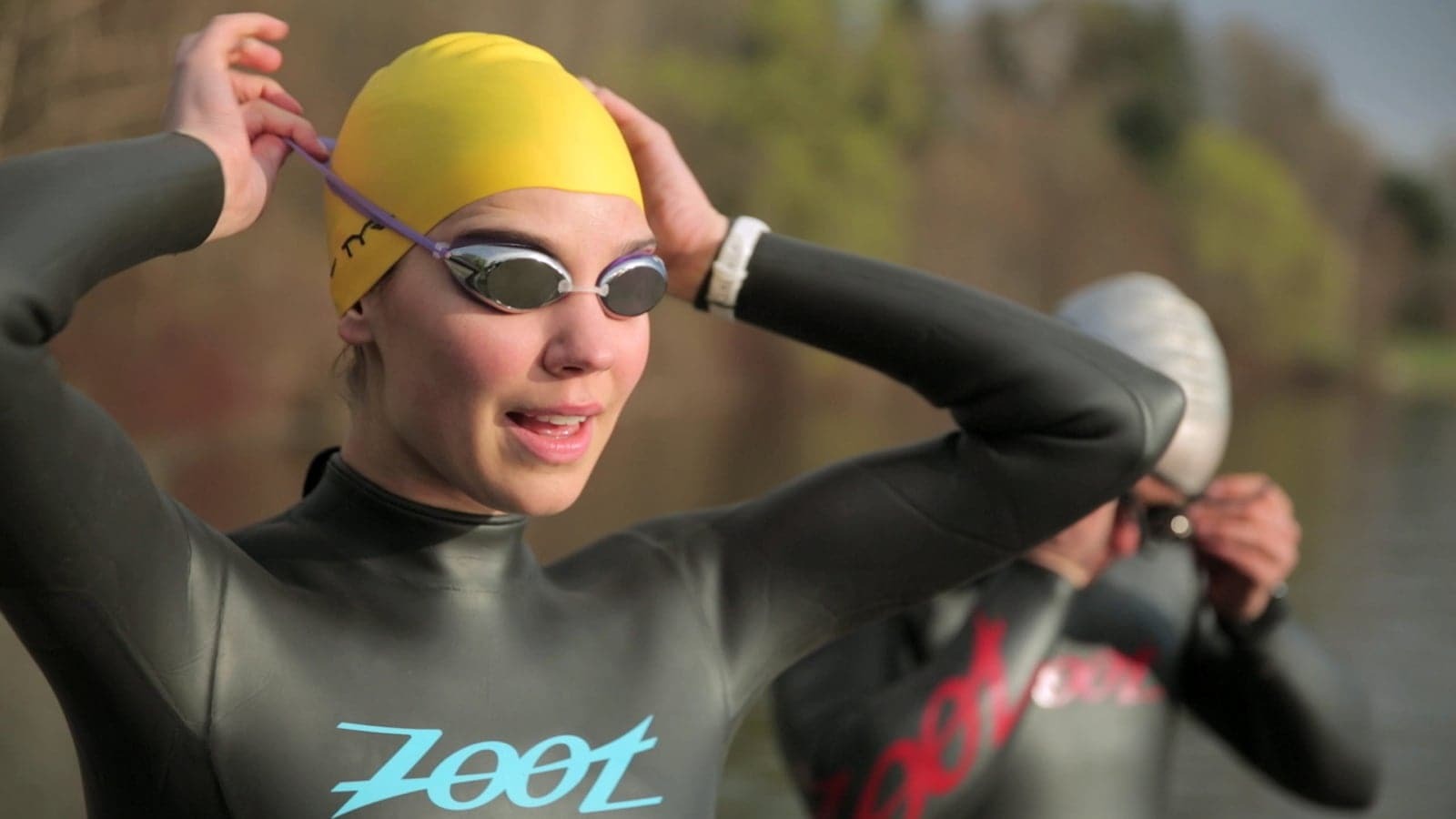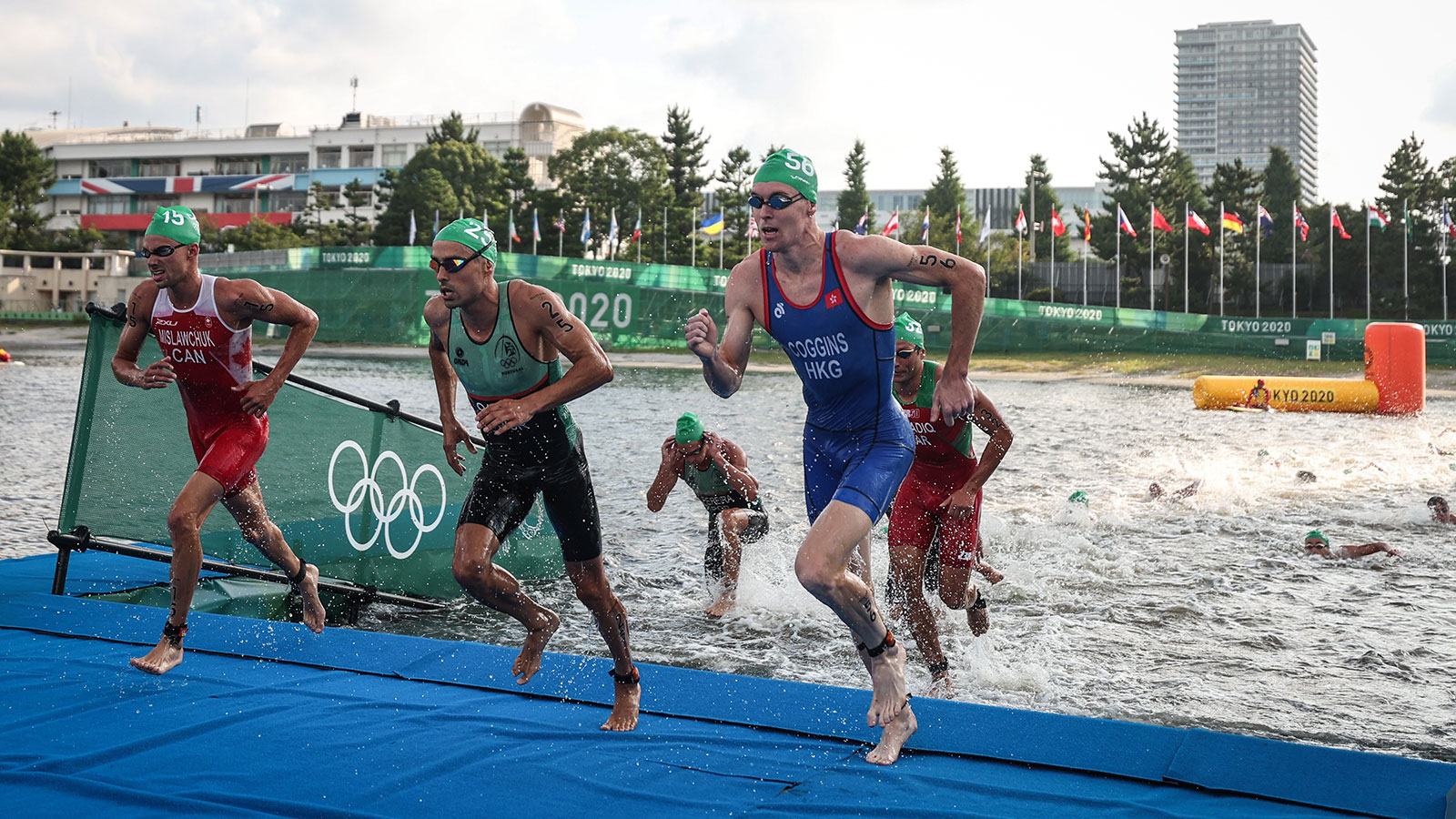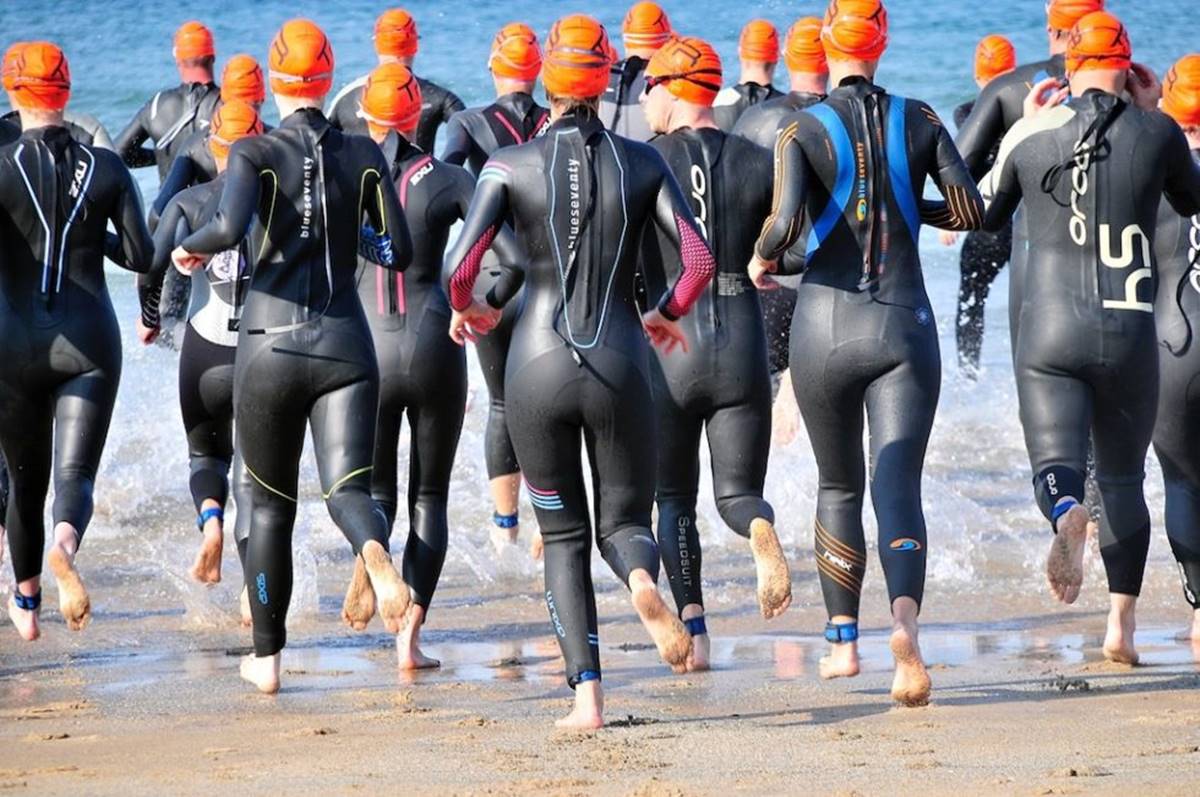

Featured
How Tight Should A Triathlon Wetsuit Fit
Modified: January 22, 2024
Find out how tight your triathlon wetsuit should fit. Get expert advice on the perfect fitting for a comfortable and efficient race. Featured article.
Introduction
When it comes to participating in a triathlon, having the right equipment is crucial for optimal performance. One essential piece of gear that every triathlete should invest in is a wetsuit. A well-fitting wetsuit not only provides buoyancy and insulation during the swim portion of the race but also aids in reducing drag and increasing speed. However, knowing how tight a triathlon wetsuit should fit can be overwhelming, especially for beginners.
Finding the perfect balance between comfort and snugness in a wetsuit is key. Too loose, and you risk excess water entering the suit and causing drag. Too tight, and you may restrict your range of motion and experience discomfort or even difficulty breathing. In this article, we will explore the factors to consider when choosing a triathlon wetsuit fit and provide tips for determining the right fit for your body.
It is important to understand that each individual has unique body measurements and proportions, so there is no one-size-fits-all answer when it comes to wetsuit fitting. The goal is to find a wetsuit that conforms closely to your body, allowing for maximum flexibility and efficient swimming without sacrificing comfort.
Additionally, it’s worth noting that advances in wetsuit technology have made it possible to find suits with various levels of thickness and flexibility, catering to the needs of different athletes. Before selecting a wetsuit, consider factors such as water temperature, race conditions, and personal preferences to ensure you choose the most suitable option for your specific needs.
In the following sections, we will delve deeper into the factors to consider when choosing a triathlon wetsuit fit and discuss the importance of getting the fit right to maximize your performance. So, let’s dive in and explore the world of triathlon wetsuits!
Factors to Consider When Choosing a Triathlon Wetsuit Fit
When it comes to choosing the right triathlon wetsuit fit, there are several factors you should take into consideration. These factors will help you find a wetsuit that not only provides the necessary performance benefits but also ensures your comfort and flexibility during the race. Let’s explore these factors in depth:
- Body Measurements: One of the most important factors to consider is your body measurements. Each wetsuit brand may have slightly different sizing charts, so it’s crucial to measure your chest, waist, hips, and height accurately. Compare these measurements with the brand’s sizing guide to find the size that matches your dimensions.
- Flexibility: The flexibility of a wetsuit is vital, as it allows for unrestricted movement during the swim. Look for a wetsuit made of high-quality neoprene that provides flexibility in the shoulders, arms, and torso. This will enable you to maintain a full range of motion and swim with ease.
- Buoyancy: Buoyancy is a key aspect of triathlon wetsuits, as it helps to keep your body position higher in the water, reducing drag and improving your overall swimming efficiency. Consider the thickness and buoyancy levels of the wetsuit, especially in the chest and legs, to ensure it provides the necessary lift without compromising comfort.
- Neck Seal: The neck seal is an often overlooked but critical component of a triathlon wetsuit. A proper neck seal should be snug enough to prevent water from entering the suit but not so tight that it restricts your breathing or causes discomfort. Look for wetsuits with adjustable or low-profile neck seals to achieve the right balance of fit and comfort.
- Zipper Type: Wetsuits typically come with either a back zipper or a front zipper. Each has its advantages and considerations. Back zippers are easier to get in and out of but may be less flexible. Front zippers provide better flexibility but can be a bit challenging to put on and remove. Consider your preference and comfort level when choosing the zipper type.
- Try Before You Buy: Whenever possible, visit a physical store or attend demo events to try on different wetsuit brands and models. This will allow you to assess the fit, comfort, and flexibility firsthand. Remember, a wetsuit that fits perfectly on someone else may not be the best fit for your body shape and size.
By considering these factors, you can narrow down your options and find a triathlon wetsuit that fits you like a second skin, optimizing your performance while ensuring your comfort during the race.
The Importance of Proper Fit in a Triathlon Wetsuit
When it comes to participating in a triathlon, the proper fit of your wetsuit plays a crucial role in your overall performance and comfort. Here are some key reasons why achieving the right fit is so important:
- Enhanced Performance: A triathlon wetsuit that fits well can significantly improve your performance in the water. The snug fit reduces drag, allowing you to move through the water more efficiently. It also provides added buoyancy, lifting your body higher and improving your body position. This increased hydrodynamics can help you swim faster and conserve energy for the bike and run portions of the race.
- Thermal Insulation: A properly fitting wetsuit creates a thermal barrier between your body and the water. It traps a thin layer of water, which is quickly warmed by your body heat, acting as insulation against the cold. This insulation not only keeps you comfortable but also prevents hypothermia, especially in colder water temperatures.
- Comfort and Range of Motion: When your wetsuit fits correctly, it allows for unrestricted movement and flexibility. You can move your arms and shoulders freely during the swim stroke, maintaining a natural and efficient technique. Additionally, a well-fitting wetsuit minimizes chafing and irritation, ensuring you stay comfortable throughout the entire race.
- Reduced Water Entry: A key function of a wetsuit is to prevent excess water from entering the suit. When the wetsuit fits properly, it creates a barrier that minimizes water entry. This not only helps to maintain warmth but also reduces drag caused by excess water-filled material. Less drag leads to improved efficiency and faster swim times.
- Confidence and Mental Focus: Wearing a well-fitted wetsuit that you feel comfortable in can have a positive impact on your mental state during the race. It boosts your confidence, allowing you to focus on your performance rather than worrying about the fit or discomfort of the suit. With a properly fitting wetsuit, you can enter the water with a clear mind, ready to tackle the challenges ahead.
Ultimately, investing time and effort into finding a triathlon wetsuit that fits you perfectly is essential for maximizing your performance, ensuring your comfort, and increasing your enjoyment of the race. Remember, a wetsuit that fits another athlete well may not be the best fit for you, so take the time to try on different options and seek professional advice if needed.
How Should a Triathlon Wetsuit Fit?
Getting the proper fit for your triathlon wetsuit is essential to ensure optimal performance and comfort during the race. Here are some guidelines to follow when determining how your wetsuit should fit:
- Overall Comfort: A properly fitting wetsuit should feel snug but not overly tight. It should feel like a second skin, hugging your body without restricting your movement or causing discomfort. Pay attention to areas such as the shoulders, chest, and thighs, as these are common areas for potential restriction. Remember that wetsuits will stretch slightly when wet, so a snug fit when dry is ideal.
- No Wrinkles or Excess Fabric: When trying on a wetsuit, ensure there are no significant wrinkles or folds of excess fabric. Wrinkles can indicate that the wetsuit is too loose and may cause additional drag in the water. The wetsuit should fit smoothly against your skin without any sags or folds.
- Range of Motion: Test the wetsuit’s flexibility by mimicking swimming movements in the changing room. Raise your arms overhead, rotate your shoulders, and perform swim-specific motions. The wetsuit should allow for a complete range of motion without feeling restrictive or causing discomfort. Ensure you can easily bend your elbows and move your arms without any hindrance.
- Neck Seal: The neck seal should fit snugly to prevent water from entering the suit but should not feel constricting or cause discomfort. It’s crucial to find a balance between a tight enough seal to prevent water entry and a comfortable fit that allows for effortless breathing and unrestricted movement.
- No Gaps: Check for any gaps between the wetsuit and your body. Areas to pay close attention to include the back of the knees, underarms, and lower back. Allowing excess water to accumulate in these areas can increase drag and hinder your swimming performance.
- Zipper and Closure: Ensure that the zipper and closure system of the wetsuit provide a secure and tight seal. The zipper should be easy to open and close, while the closure system should keep the wetsuit firmly in place. Test the closure by simulating swim motions to ensure it stays securely fastened.
It’s important to note that the fit may differ slightly depending on personal preference and body shape. Some athletes may prefer a slightly looser fit, while others may opt for a tighter feel. The key is to find a balance between comfort, flexibility, and minimal water entry. Take your time to try on different wetsuit models and seek professional advice if needed to ensure the best fit for your needs.
Tips for Determining the Right Fit for Your Triathlon Wetsuit
Finding the right fit for your triathlon wetsuit can be a challenging process. To help you in your quest for the perfect fit, here are some useful tips:
- Know Your Body Measurements: Take accurate measurements of your chest, waist, hips, and height. Refer to the sizing charts provided by wetsuit manufacturers to find the size that closely matches your measurements. Keep in mind that sizing may vary between brands, so it’s essential to consult each brand’s specific sizing guidelines.
- Try Before You Buy: Whenever possible, visit a physical store or attend a demo event to try on different wetsuits. Trying on multiple brands and models will allow you to compare fits and determine which one feels the most comfortable and provides the best range of motion.
- Consider Your Swim Technique: If you have a specific swim technique or style, take that into account when choosing a wetsuit. For example, if you have a more aggressive stroke or prefer a wider arm swing, you may need a wetsuit that offers greater flexibility in the shoulder area.
- Seek Advice from Experts: If you’re unsure about the right fit for your body type, don’t hesitate to seek advice from experts at the store or from experienced triathletes. They can provide valuable insights and recommendations based on their knowledge and personal experiences.
- Consider Your Race Conditions: Think about the specific race conditions you’ll be facing. If you’re competing in warmer water, you may opt for a thinner and more flexible wetsuit. For colder water temperatures, a thicker wetsuit with added insulation may be necessary. Consider the water temperature range and choose a wetsuit that provides adequate warmth without sacrificing comfort and flexibility.
- Give Yourself Time to Adjust: Be aware that it may take some time for your body to get used to the feel of a wetsuit, especially if you’re new to wearing one. Give yourself time to acclimate by practicing in the suit during training sessions. This will allow you to make any necessary adjustments or exchanges before your race day.
Remember, finding the right fit may require some trial and error. It’s worth the effort to ensure you have a wetsuit that fits you well, providing comfort, flexibility, and optimal performance during your triathlon. Don’t rush the process, and don’t hesitate to seek assistance along the way. With the right fit, you’ll be ready to conquer the swim portion of your race with confidence and ease.
Common Mistakes to Avoid When Trying on a Triathlon Wetsuit
When trying on a triathlon wetsuit, it’s important to avoid common mistakes that can lead to selecting the wrong fit. By being aware of these mistakes, you can save time, money, and ensure a more enjoyable race experience. Here are some important mistakes to avoid:
- Not Trying on Multiple Brands: Don’t limit yourself to just one brand or model. Each brand has its own sizing and fit characteristics, so it’s essential to try on wetsuits from different manufacturers. This will give you a better idea of how different brands cater to your specific body shape and size.
- Choosing Based on Looks Alone: While aesthetics may be tempting, don’t let the appearance of a wetsuit be the sole determining factor in your decision. Focus on the fit, flexibility, and comfort instead. Remember, the wetsuit’s performance in the water is more crucial than its appearance on land.
- Ignoring the Range of Motion: It’s easy to get caught up in how the wetsuit fits when standing still. However, it’s crucial to test the range of motion by mimicking swim movements. Raise your arms, rotate your shoulders, and perform swimming motions to ensure the wetsuit allows for unrestricted movement.
- Overlooking the Neck Seal: The neck seal of a wetsuit is often underestimated but can significantly impact your comfort and performance. Ensure the neck seal fits snugly to prevent water entry but doesn’t feel overly tight or constricting. Ignoring the fit of the neck seal can lead to discomfort and restriction while swimming.
- Disregarding Water Entry: Pay attention to any areas where water may enter the wetsuit. Check for gaps or loose areas that might allow water ingress. Even minor water entry can cause discomfort and affect your swimming efficiency. Ensure a tight and secure fit to minimize the risk of water entering the suit.
- Not Accounting for Compression: Wetsuits are designed to provide compression, which can enhance muscle support and performance. However, it’s important not to mistake compression for a wetsuit being too small. The suit should fit snugly but not excessively compress your body to the point of discomfort or restricted blood circulation.
By avoiding these common mistakes, you can increase your chances of finding a triathlon wetsuit that fits you properly and enhances your swim performance. Take your time during the fitting process, seek advice if needed, and prioritize fit, comfort, and flexibility over aesthetics. With the right approach, you’ll be well-equipped for a successful and enjoyable triathlon swim.
Adjusting and Maintaining the Fit of Your Triathlon Wetsuit
Once you have found the right fit for your triathlon wetsuit, it’s important to properly adjust and maintain the fit to ensure its longevity and optimal performance. Here are some tips on how to adjust and maintain the fit of your wetsuit:
- Time Your Adjustments: It’s common for wetsuits to stretch slightly when wet. To account for this, it’s recommended to put on your wetsuit right before entering the water. This will ensure a snug and comfortable fit during the swim, as the material will conform to your body when wet.
- Check for Tight Areas: Once the wetsuit is on, assess if there are any areas that feel excessively tight or constricting. These areas can cause discomfort and restrict your range of motion. If you notice any overly tight spots, gently stretch the neoprene in those areas using your hands. This will help to alleviate any pressure points or restrictions.
- Secure the Zippers and Closures: Make sure all zippers and closures are securely fastened before entering the water. Ensure the zipper is pulled up completely and locked into place. Double-check any velcro straps or buckles to ensure they are snugly closed.
- Inspect and Repair: Regularly inspect your wetsuit for any signs of wear or tear. Check for small holes, loose stitching, or peeling tape. Repair any damages promptly to prevent further deterioration and maintain the integrity of the suit. Neoprene repair kits are available for minor fixes, or seek professional help for more significant repairs.
- Rinse and Dry Properly: After each use, rinse your wetsuit with fresh water to remove any saltwater, sand, or debris. Hang it up to dry in a well-ventilated area, away from direct sunlight or heat sources. Avoid folding or crumpling the wetsuit while drying, as this can cause creases and distortion in the material.
- Avoid Excessive Stretching: When putting on or removing your wetsuit, avoid excessive stretching of the material. Pull gently on the suit to avoid tearing or damaging the neoprene. Remember, a wetsuit that fits correctly should slide on easily without excessive force.
- Store Properly: When not in use, store your wetsuit in a cool, dry place, ideally hanging up or folded neatly with minimal pressure on the seams. Avoid storing it in a rolled-up or crumpled position for extended periods, as this can lead to permanent creases and affect the fit.
By following these adjustment and maintenance tips, you can prolong the life of your triathlon wetsuit and ensure it continues to provide a comfortable and effective fit throughout your training and races. Regular care and attention will ensure your wetsuit remains in top condition, ready to support your performance in the water.
Conclusion
Choosing and achieving the right fit for your triathlon wetsuit is a critical component of your race preparation. A well-fitting wetsuit enhances your performance, providing buoyancy, reducing drag, and allowing for optimal range of motion. It also ensures your comfort, keeping you warm and insulated in the water.
Throughout this article, we have explored the factors to consider when choosing a triathlon wetsuit fit, the importance of getting the fit right, and tips for determining the perfect fit for your body. We have also highlighted common mistakes to avoid and provided guidance on adjusting and maintaining the fit of your wetsuit.
Remember, finding the right fit may take time and experimentation. Each individual has unique body measurements and preferences, so it’s crucial to try on different brands and models to find the one that suits you best. Seek advice from experts, consider your race conditions, and prioritize comfort, flexibility, and minimal water entry.
Once you have found the ideal fit, make sure to adjust and maintain the wetsuit properly. Timing your adjustments, inspecting and repairing any damages, and rinsing and drying the suit correctly will help prolong its lifespan and preserve its performance capabilities.
So, dive in with confidence and enjoy the benefits of a well-fitting triathlon wetsuit. Experience improved performance, enhanced comfort, and a more enjoyable swim leg in your triathlon races. With the right fit, you’ll be primed for success as you conquer the water and achieve your triathlon goals.

